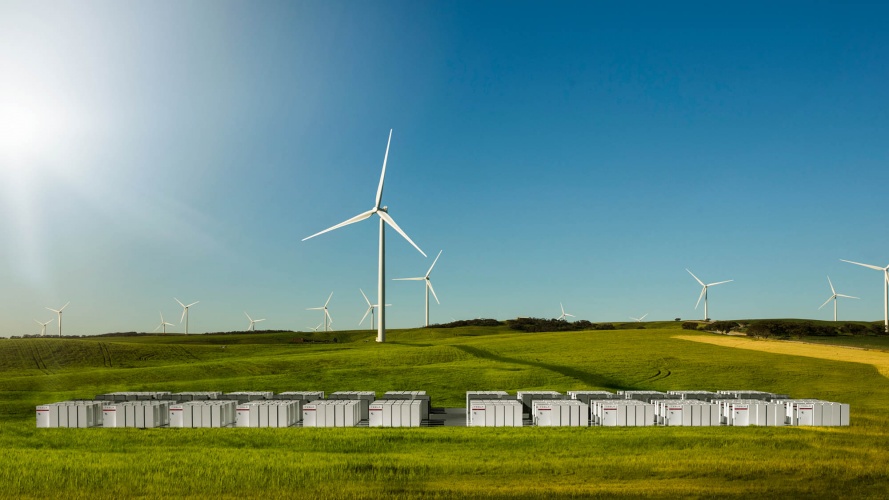
(Credit: Tesla)
Due to be up and running by December 2017, the project will see a scaled-up version of Tesla’s Powerpack technology used. The facility will provide a total of 129MWh of energy, capable of delivering power to around 30,000 homes. According to Tesla, the system will be paired with energy provider Neoen’s Hornsdale Wind Farm, located near Jamestown in South Australia.
Recent years have seen storms and heat waves leaving residents in the region without power on numerous occasions, prompting the government to act. After a tendering process that called for grid-scale solutions, Tesla was awarded the entire storage component of the project.
“Tesla Powerpack will charge using renewable energy from the Hornsdale Wind Farm and then deliver electricity during peak hours to help maintain the reliable operation of South Australia's electrical infrastructure,” read a statement on Tesla’s website.
“The Tesla Powerpack system will further transform the state’s movement towards renewable energy and see an advancement of a resilient and modern grid.”
As well as helping to prevent blackouts in the state, Tesla claims the system will reduce intermittencies and assist in managing the summertime peak load, adding much-needed resiliency to the grid. Alongside the commercial Powerpack system being delivered for the state government, Tesla says its Powerwall product for homes is also being adopted by residential customers across Australia.
“The same technology that can help stabilise the South Australian grid can also be used by homeowners to collect energy during the day so it is stored and made available day and night, providing uninterrupted power even if the grid goes down,” the company said.




Nanogenerator consumes CO2 to generate electricity
Whoopee, they've solved how to keep a light on but not a lot else.